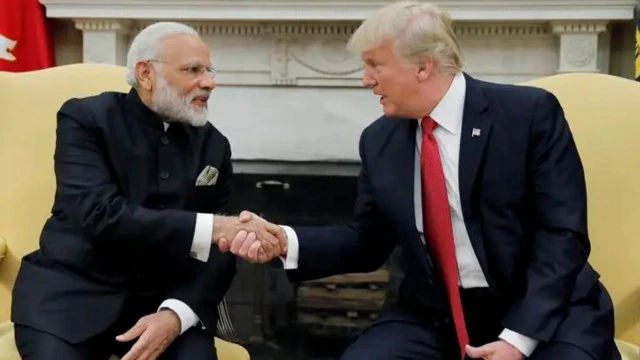Breaking: India & Pakistan Agree to Comprehensive Ceasefire Deal
In a groundbreaking development, India Pakistan ceasefire have agreed to stop all military action on land, sea, and air starting from 5 PM on the announced date. This ceasefire agreement marks a significant step towards reducing tensions between the two nuclear-armed neighbours, who have a long history of conflict.
The decision, announced by the Indian government, has sparked hope for lasting peace in the region. But what led to this sudden agreement? Will it hold, or is it just another temporary truce? This blog explores the details of theIndia Pakistan ceasefire, its implications, and the road ahead.
What Is a Ceasefire?
The Meaning of Ceasefire
A ceasefire is a temporary halt in fighting between warring parties, often agreed upon to facilitate peace talks, deliver humanitarian aid, or de-escalate violence. Unlike a permanent peace treaty, a ceasefire is usually short-term but can pave the way for long-term resolutions.
In today’s conflict-ridden world, ceasefires play a crucial role in saving lives and creating opportunities for diplomacy. But how do they work? Who enforces them? And why do they sometimes fail?
This in-depth guide explores everything you need to know about ceasefires, their significance, challenges, and real-world examples.
Understanding the India Pakistan Ceasefire Agreement
What Does the Ceasefire Entail?
According to the announcement, both nations have agreed to:
-
Halt all military operations along the Line of Control (LoC) and International Border (IB).
-
Stop cross-border shelling and firing that has claimed countless lives over the years.
-
Maintain peace on land, sea, and air to prevent accidental escalations.
This ceasefire follows months of behind-the-scenes diplomacy, with both sides acknowledging the need to reduce hostilities.
Why Now? The Timing of the Ceasefire
Several factors may have contributed to this decision:
-
International Pressure – Global powers, including the US and UN, have urged restraint.
-
Economic Strain – Both countries face financial challenges, making military spending unsustainable.
-
Backchannel Diplomacy – Reports suggest secret talks between intelligence agencies paved the way.
-
Public Sentiment – Civilians on both sides have long demanded an end to violence.
A Look Back: The History of India Pakistan Ceasefires
Past Agreements and Their Outcomes
This isn’t the first time India and Pakistan have agreed to a ceasefire. Previous attempts include:
-
2003 Ceasefire – Held for years but collapsed due to repeated violations.
-
2018 Understanding – A short-lived truce that failed to prevent further clashes.
Why Have Previous Ceasefires Failed?
-
Lack of Trust – Both sides accuse each other of violating terms.
-
Proxy Warfare – Allegations of Pakistan supporting militants in Kashmir.
-
Political Posturing – Hardliners on both sides often derail peace efforts.
Will this new ceasefire break the cycle? Only time will tell.
Implications of the India Pakistan Ceasefire
1. Relief for Border Residents
For civilians living near the LoC, daily shelling has been a nightmare. This ceasefire brings hope for normalcy—schools reopening, farmers working without fear, and families reuniting.
2. Boost to Regional Stability
A peaceful India-Pakistan border could improve trade and diplomatic relations, benefiting the entire South Asian region.
3. Impact on Kashmir
Kashmir remains a flashpoint. If the ceasefire holds, it could create space for political dialogue.
4. Global Reactions
World leaders have welcomed the move. The US, China, and EU see it as a positive step towards de-escalation.
India Pakistan Ceasefire Marks One Year of Border Peace
The India Pakistan ceasefire has completed one year, marking a significant milestone in efforts to reduce tensions along the Line of Control (LoC). Since the renewed commitment in February last year, both nations have largely upheld the agreement, leading to a sharp decline in cross-border firing. This peaceful turn has brought much-needed relief to civilians living in conflict-prone border areas. While the India Pakistan ceasefire signals progress, experts emphasize that sustained dialogue and confidence-building measures are essential to maintain and strengthen this fragile peace between the two long-time rivals.
Challenges Ahead: Will the Ceasefire Last?
Despite optimism, several hurdles remain:
1. Trust Deficit
Decades of conflict mean neither side fully trusts the other. Any minor incident could reignite tensions.
2. Militant Groups
Pakistan-based groups like Lashkar-e-Taiba (LeT) and Jaish-e-Mohammed (JeM) may attempt to sabotage peace.
3. Domestic Opposition
Hardline factions in both countries could oppose concessions, calling it a “weak move.”
4. Long-Term Diplomacy Needed
A ceasefire is just the first step. Sustainable peace requires dialogue on Kashmir, terrorism, and trade.
What’s Next? The Road to Lasting Peace
For the India-Pakistan ceasefire to succeed, both nations must:
- Strengthen Communication – Hotlines between militaries can prevent misunderstandings.
- Monitor Violations – A third-party observer could ensure compliance.
- Encourage People-to-People Contact – Cultural exchanges and trade can build goodwill.
- Address Core Issues – Kashmir, terrorism, and water disputes need resolution.
Conclusion: A Glimmer of Hope
The India-Pakistan ceasefire is a welcome move, offering a rare chance for peace. While challenges remain, the agreement shows that diplomacy can prevail over conflict.
Will this be the beginning of a new era, or just another fleeting truce? The world watches with cautious optimism.
What are your thoughts on the ceasefire? Do you think it will last? Share your views in the comments!

